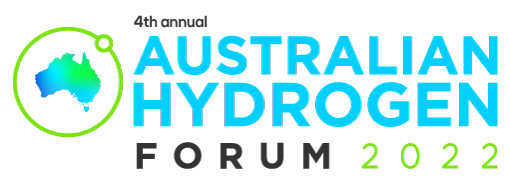24TH APRIL 2019
Article written by Boris Petrovic, conference director and content lead for the 7th Australian Domestic Gas Outlook 2019 (Sydney, 4-7 March), Australian Energy Week 2019 (Melbourne, 11-14 June) and the Australian Hydrogen Forum 2019 (Sydney, 18-19 Sept).
The Australian Domestic Gas Outlook 2019 conference recently hosted a day dedicated to helping gas market participants understand the commercial opportunities that the rise of hydrogen presents to the sector.
The conference, called Hydrogen & Gas 2030, was a highly fruitful gathering with many insights emerging from those leading the H2 industry. Below is an outline of some of the salient issues and insights that will define the discussion on Australian hydrogen for the coming year and beyond.
Summary highlights:
Social licence to operate
The hydrogen industry will exist within the existing energy market ecosystem and culture, and therefore should make an especially conscious effort to secure a social licence to operate early. Industry participants should still think about the likely impact of H2 operations on water resources, energy prices, community relations, public understanding of safety, and undertake rigorous social and environmental impact studies to ensure sustainable growth.
H2 exports in federal policy
Practically every H2-engaged company is looking at the lucrative export potential of hydrogen to places such as South Korea and Japan. The Federal government will need to have a hydrogen policy line that secures the interest of domestic stakeholders to avoid political difficulties down the line. It will be necessary for the impacts and benefits of H2 to be felt by stakeholders at home before they can be abroad. Analogies to the lack of policy on LNG that led to the east coast gas market crisis have some resonance here.
Water will be an existential industry issue
Vast amounts of water will be needed as an input to scaled H2 production. Australia recently emerged from one of the worst droughts in its modern existence, which will make water one of the defining issues as to whether a big hydrogen industry is viable. Practical questions such as whether the use of State’s desalination plants can be made available for H2 and where the raw water resources will come from, must be addressed and planned for.
Huge (theoretical) opportunity for the NEM and renewable generation projects
A vast amount of electricity will also be required to produce H2 at quantities where it is significant, overall this should be seen as a huge opportunity for renewable energy generators. Given that H2 can be stored effectively, it would give energy generators a reason to churn out as much energy as possible in order to convert it into H2, which can then be sold and traded. Having H2 as a scaled storage solution will lead to grid stabilisation and, in turn, electricity price management. This should also mean that H2 could greatly benefit the NEM and energy customers - increasing reliability, lowering energy costs and effectively decarbonising the energy sector. Although, currently, generators aren’t looking at the opportunity seriously enough and they will make up the most crucial segment of the supply chain.
Massive capex required to achieve scale
It will take billions in collective investment in R&D and infrastructure alone to get the cost of hydrogen and accessibility to a state where it is a viable fuel alternative. For this to happen the finance community needs to invest in understanding the technical and commercial nature of H2 projects as without this familiarity there is unlikely to be the adequate level of investment needed. Public sector money should drive much initial innovation, but private institutions need to be heavily engaged to achieve any kind of scale.
Technical issues remain so the industry is still an idea – but a very good one
There is still much depending on the surmounting of technical challenges such as solar cell efficiency, efficiency of water electrolysis, economical hydrogen storage in existing gas pipelines and scalable desalination technology for water, among a plethora of others.
All countries with a high degree of renewables penetration in the energy mix could produce green hydrogen. While those with lots of fossil fuel resources on their territory could produce blue or brown hydrogen, providing that carbon capture and storage tech is actually effective (which is a big ‘if’) and they want to produce a sustainable product. Australia could be the country that bequeaths to the world a stable climate through its technical leadership on H2.
Please fill in the form below to access the full article. You will also receive an email with a URL link to access the article again or to forward to a friend or colleague.
If you have any questions please contact us on info@questevents.com.au or +61 (0)2 9977 0565.

